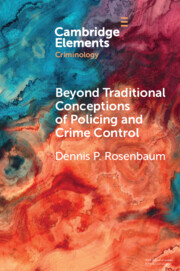Refine search
Actions for selected content:
314 results
Chapter 3 - Improving the Fens
- from Part I - Scales of Action
-
- Book:
- Violent Waters
- Published online:
- 17 December 2025
- Print publication:
- 08 January 2026, pp 65-89
-
- Chapter
- Export citation
11 - Law-Making and Incentive Bargaining
- from Part V - Legislative Policies
-
- Book:
- Incentive Bargaining and Corporate Governance
- Published online:
- 12 December 2025
- Print publication:
- 08 January 2026, pp 321-346
-
- Chapter
- Export citation
6 - Regulatory Reforms and the Rise of the Saudi Impact Sector
- from Part II - Capacity Building
-
-
- Book:
- Catalytic Capital
- Published online:
- 27 November 2025
- Print publication:
- 11 December 2025, pp 134-149
-
- Chapter
-
- You have access
- Open access
- HTML
- Export citation
Chapter 8 - Revolutionary Horizons, Reformist Hopes
- from Part II - The Revolutionary People
-
-
- Book:
- 'The People' and British Literature
- Published online:
- 11 December 2025
- Print publication:
- 11 December 2025, pp 126-140
-
- Chapter
- Export citation
17 - Transformation and Reversion, 1989–1999
-
- Book:
- Distant Friends and Intimate Enemies
- Published online:
- 30 October 2025
- Print publication:
- 20 November 2025, pp 371-392
-
- Chapter
- Export citation
9 - Transforming Chilling Effects Doctrine
- from Part III - Implications
-
- Book:
- Chilling Effects
- Published online:
- 20 November 2025
- Print publication:
- 20 November 2025, pp 152-167
-
- Chapter
- Export citation
14 - The Right to Bargain Collectively
- from Part IV - Collective Labour Rights
-
- Book:
- Labour Law
- Published online:
- 02 October 2025
- Print publication:
- 20 November 2025, pp 566-629
-
- Chapter
- Export citation
Conclusion: Beyond Hegel
-
- Book:
- Hegel Beyond Liberalism
- Published online:
- 27 September 2025
- Print publication:
- 16 October 2025, pp 207-213
-
- Chapter
- Export citation
24 - Tenure 2.0
- from Part Four - Tenured-Terminations
-
- Book:
- The War on Tenure
- Published online:
- 30 September 2025
- Print publication:
- 30 September 2025, pp 201-213
-
- Chapter
- Export citation
(When) Can Trade Wars Be Good?
-
- Journal:
- World Trade Review / Volume 24 / Issue 4 / October 2025
- Published online by Cambridge University Press:
- 24 September 2025, pp. 515-519
- Print publication:
- October 2025
-
- Article
-
- You have access
- Open access
- HTML
- Export citation
The Silent Transformation of Spanish Contract Law
-
- Journal:
- Cambridge Yearbook of European Legal Studies / Volume 26 / December 2024
- Published online by Cambridge University Press:
- 11 September 2025, pp. 138-154
-
- Article
-
- You have access
- Open access
- HTML
- Export citation
Devises of advowsons to trustees
-
- Journal:
- Ecclesiastical Law Journal / Volume 27 / Issue 3 / September 2025
- Published online by Cambridge University Press:
- 04 October 2025, pp. 337-354
- Print publication:
- September 2025
-
- Article
- Export citation
Religious rights and freedom of speech
-
- Journal:
- Ecclesiastical Law Journal / Volume 27 / Issue 3 / September 2025
- Published online by Cambridge University Press:
- 04 October 2025, pp. 287-297
- Print publication:
- September 2025
-
- Article
-
- You have access
- Open access
- HTML
- Export citation
9 - Alternative Approaches in Law and Policy
-
- Book:
- Appearance, Disability and the Law
- Published online:
- 31 July 2025
- Print publication:
- 14 August 2025, pp 127-156
-
- Chapter
- Export citation
18 - Hussite Revolution and Its Heresies
- from Part II - Case Studies
-
-
- Book:
- The Cambridge Companion to Christian Heresy
- Published online:
- 17 July 2025
- Print publication:
- 31 July 2025, pp 363-384
-
- Chapter
- Export citation
3 - The Wars of Washington
-
- Book:
- Warriors in Washington
- Published online:
- 23 June 2025
- Print publication:
- 10 July 2025, pp 61-97
-
- Chapter
- Export citation
13 - The Post-Mao Reform and Its Cessation
-
- Book:
- Institutional Genes
- Published online:
- 03 June 2025
- Print publication:
- 26 June 2025, pp 594-657
-
- Chapter
- Export citation
Reforming Segregation through the Perspectives of Correctional Officers
-
- Journal:
- Canadian Journal of Law & Society / La Revue Canadienne Droit et Société / Volume 40 / Issue 1 / April 2025
- Published online by Cambridge University Press:
- 13 June 2025, pp. 48-69
-
- Article
-
- You have access
- Open access
- HTML
- Export citation

Beyond Traditional Conceptions of Policing and Crime Control
- New Metrics to Evaluate Police Performance and Improve Police Legitimacy
-
- Published online:
- 10 June 2025
- Print publication:
- 03 July 2025
-
- Element
- Export citation
1 - From Transnational Movement to Global Memory
-
- Book:
- Slavery in the International Women's Movement, 1832–1914
- Published online:
- 19 May 2025
- Print publication:
- 05 June 2025, pp 30-61
-
- Chapter
-
- You have access
- Open access
- HTML
- Export citation
